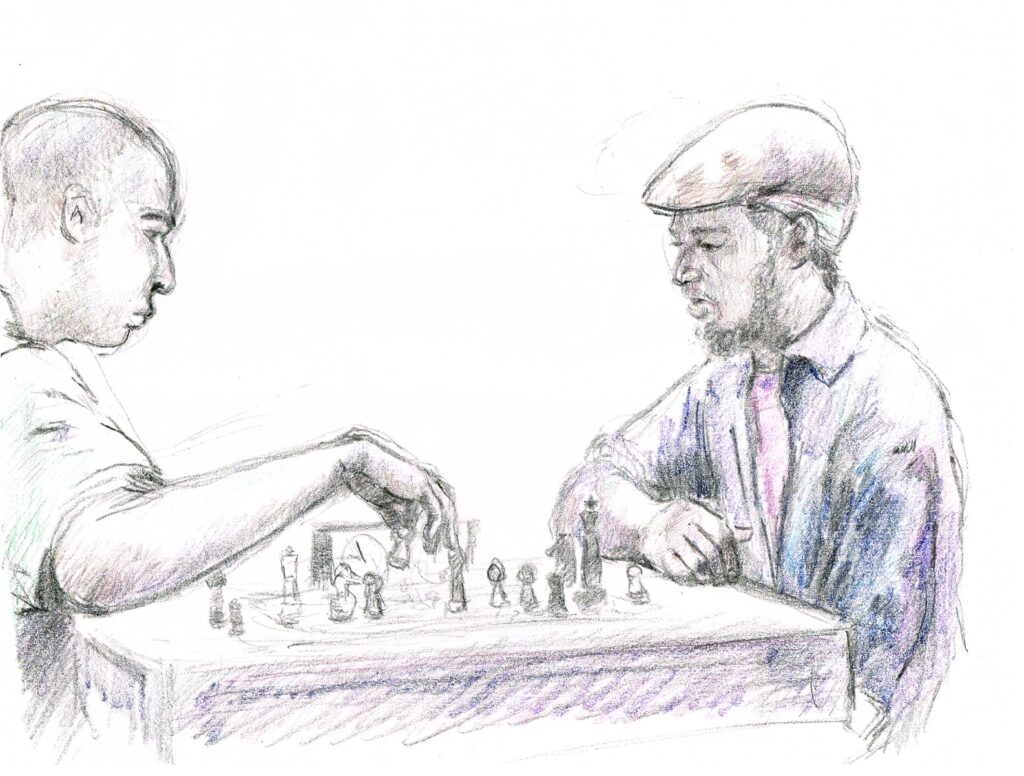For almost a decade and a half, I was fortunate enough to work a number of jobs just blocks from home or that allowed me to walk or bike home regularly. This allowed me to frequent parks and public spaces where I could sit and sketch the world of human beings around me.
I often feel a spectator looking in on the world from an ethereal outside half-existence. I supposed a number of artists may feel this way. It can be a lonely existence, but I think it allows me to see and feel things sometimes that most human beings don’t perceive as they go blithely and blindly about their busy lives. Most of these sketches have never seen the light of day, stuffed in piles of loose paper in drawers, in my closet, or in sketchbooks rarely opened. Somehow that seemed sad, despite them being just sketches. Being alone, I thought it worth scanning and posting some of them so they might see the light of day ever so briefly before the sun sets upon my fleeting moment of consciousness.








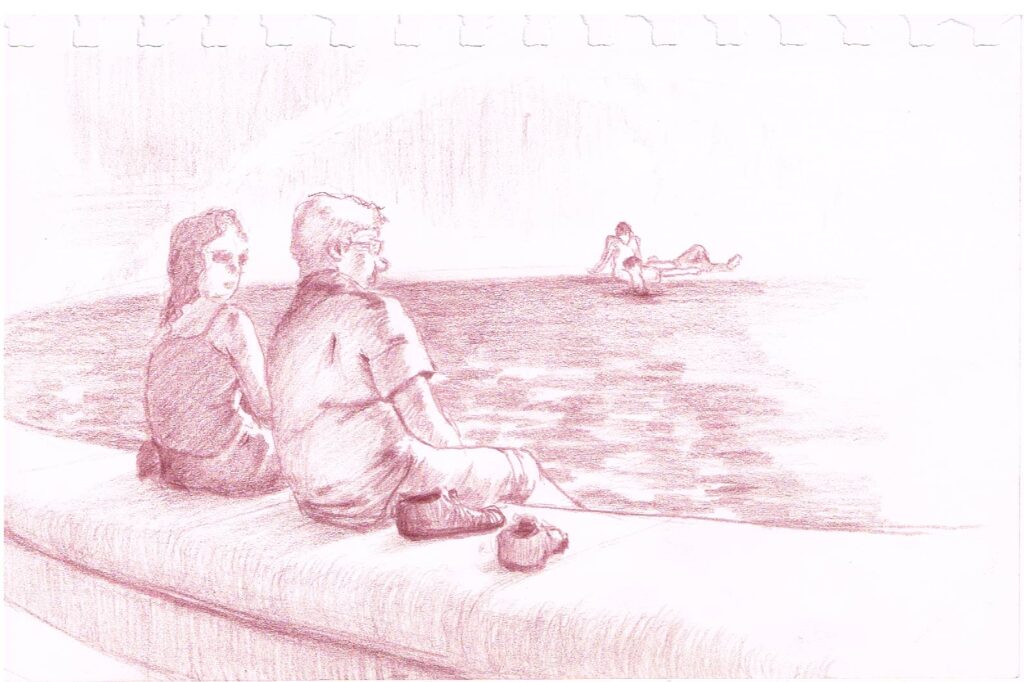




















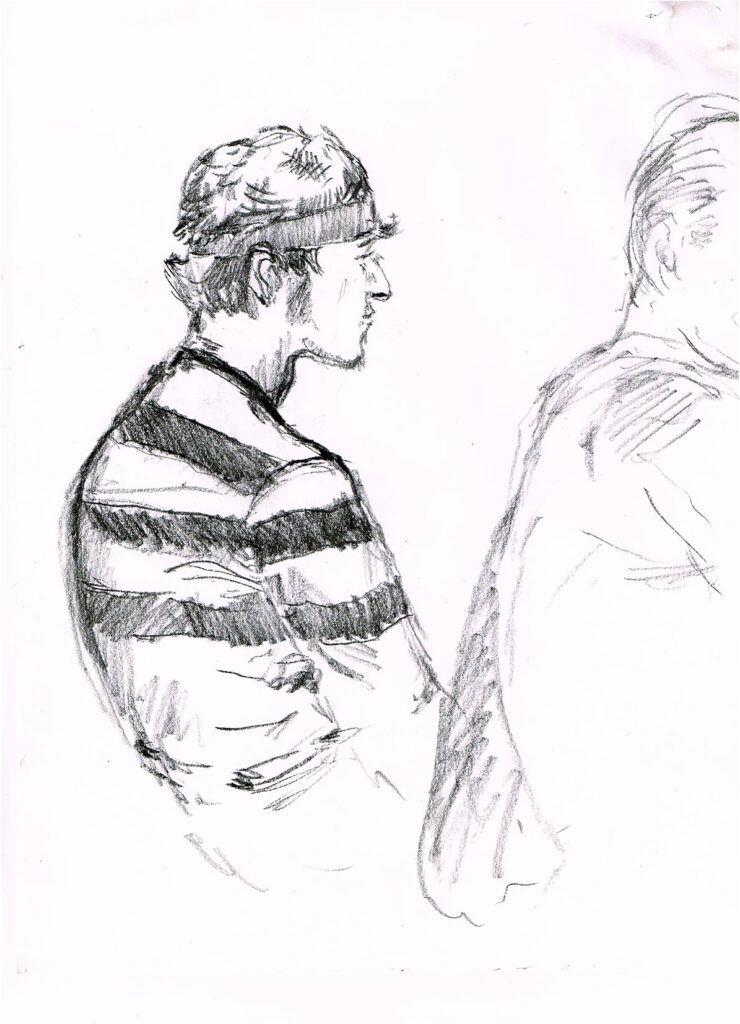








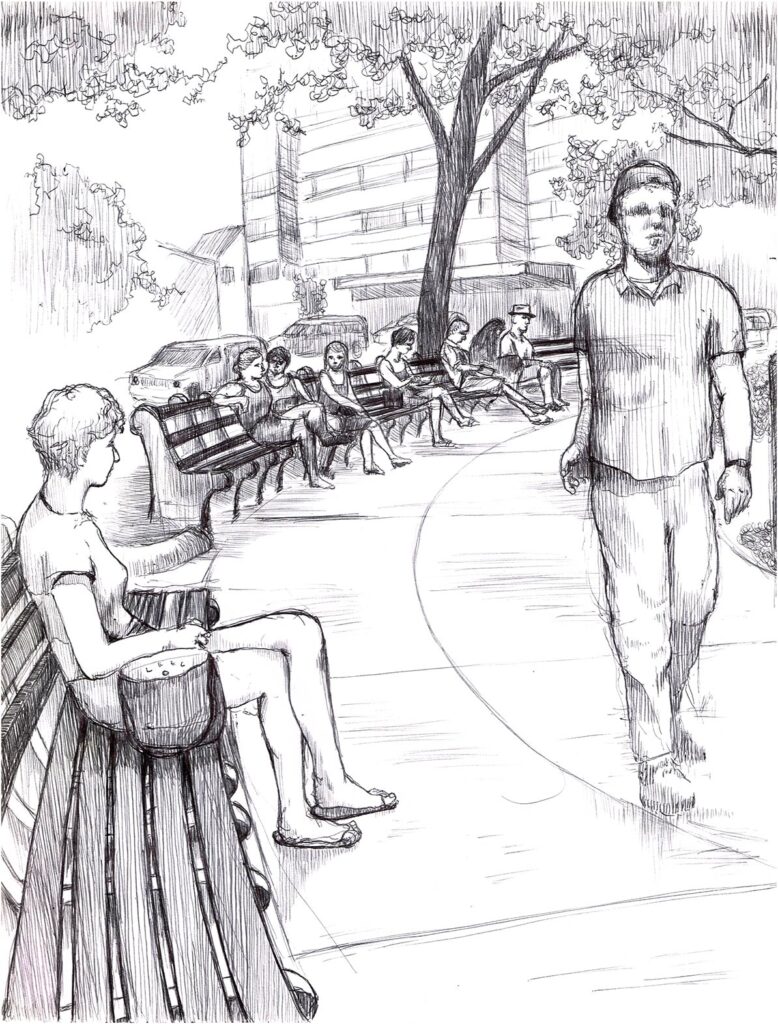










Seeing the Unseen
Being a silent, half-existing outsider looking in at the world, I have often been drawn to the unseen – the undercurrent of what often exists all around us that we often shut out, are oblivious to, or that are often forgotten and neglected. Oftentimes this takes the shape of homeless people, the elderly, and the everyday interactions of working class people in transient public environments. In my own lonely solitary existing on the outside, I often feel a certain affinity and empathy for these realities. They often straddle a strange line between understanding, appreciation, sadness, and a realization of the true nature of the human condition. In fact, in a way, I somehow feel the most comfortable when I am amongst and observing the unseen.
For decades I would frequent working-man joints like McDonalds. In them, one can always witness the hard realities of modern American life that are often unseen in the trendy, shiny, overpriced, cookie-cutter, gentrified and franchised establishments that seem to proliferate in these days of growing inequality and urban homogenization. Sitting in these joints, one can witness homeless people consuming an unhealthy cheap meal, immigrant construction workers comfortably ordering food in Spanish to Spanish speaking employees, working parents trying to feed a family, and the elderly sitting alone and forgotten, nursing a cup of coffee. Witnessing the forgotten elderly sometimes reminds me of Edgar Degas’ painting “L’Absinthe” or Édouard Manet’s earlier work, “The Absinthe Drinker” — singular figures lost in the oblivion of inner thoughts and loneliness, nursing a libation, forgotten by society.
Other times, I like sitting in transitory public spaces watching the stream of humanity in all its forms take shape. There, one can witness people coming and going from all across the country and world, and the bustle of commerce being conducted. Yet, if you look closer, you might also be able to witness the unseen underbelly of society that we often seem to push out of our consciousness. Homeless people resting at table or waiting areas in public spaces because they have nowhere else to go, or cleaning themselves in the public restroom next to the suited white color worker, exhausted working-class people napping before their long commute home or their journey to their next job, schoolkids congregating and socializing over fast food after school has let out, or travelers clearly from far corners like Amish folk, Cowboy hat-wearing individuals, or wide-eyed rural visitors assessing choices in a food court and gravitating towards the unhealthy American food choices they feel more comfortably with rather than bravely trying the much more interesting ethnic or healthy choices they might not be accustomed to. The more patience we have to sit, look, and absorb, the more of humanity we see and understand.






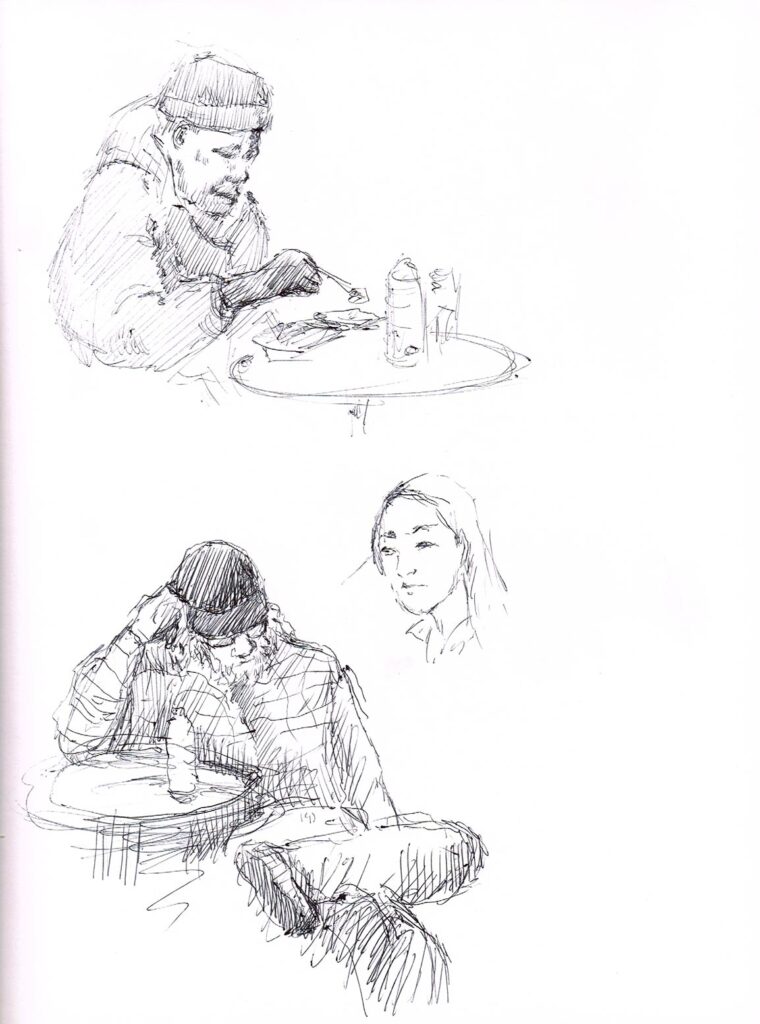



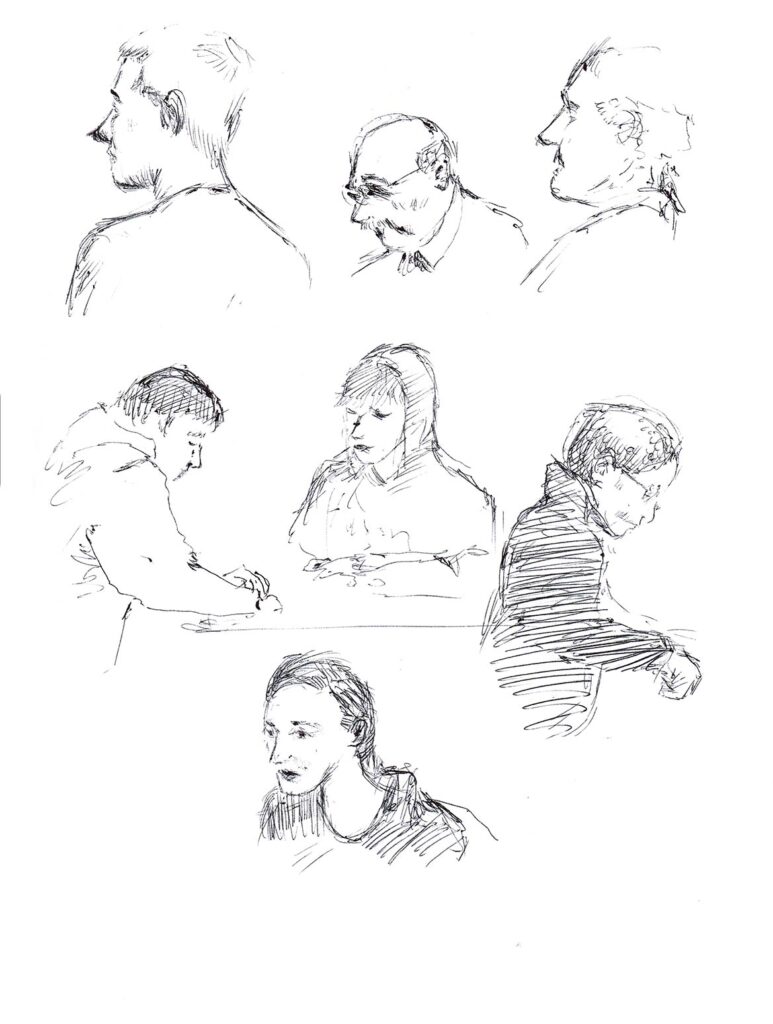





Chessmatch
I used to watch the intense chess matches at the public chess tables at Dupont Circle when I lived in Washington DC’s Dupont neighborhood. Sometimes the matches get intense, there’s always spectators watching, and because everyone is so focused on the chess match, it’s often easier to sketch people.

